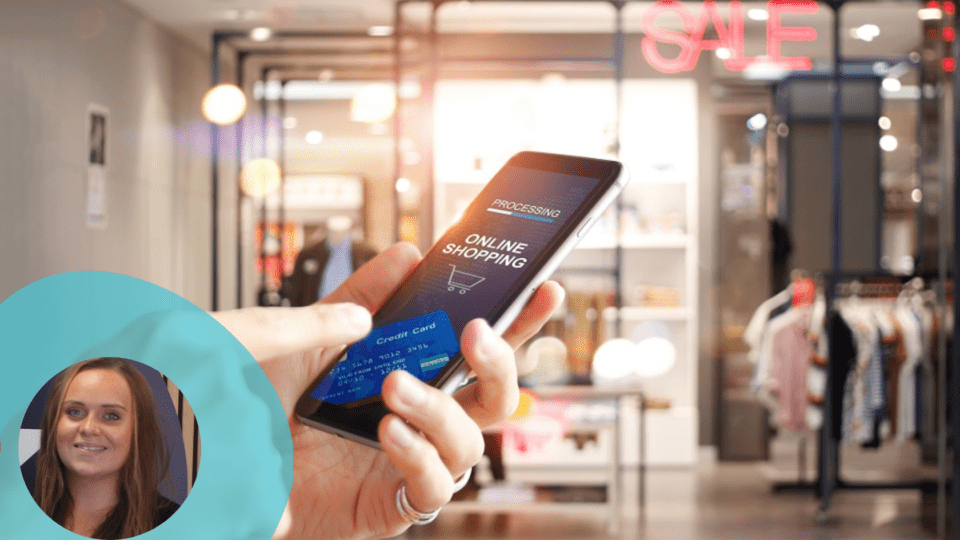Omnichannel planning is widely recognised as the contemporary, effective and optimal approach to coordinating digital media. We all know that crafting a brilliant digital media plan stems from developing a comprehensive digital strategy.
It’s all very smart, but it seems we may be missing a trick in not considering each individual device. After all, the way we use a laptop and mobile phone are different, yet us marketers so often plan a campaign that treats every device as equal.
Sure, there are obvious benefits to omnichannel planning, but are we omni-obsessed?
Particularly in a competitive industry like retail, where mobile phones already account for 75% of retail site visits and were used to make 70% of online shopping orders last year, adopting a mobile specific approach to your advertising and digital customer experience (DCX) could make all the difference in setting yourself apart from the crowd.
Advertisement
The Store is in Your Pocket
Go back to a decade ago and marketing strategies were predominantly single channel, thanks to the challenges of crafting an omnichannel marketing experience. But cookie-based targeting revolutionised the landscape, empowering marketers to reach potential customers across the vast expanse of the internet.
Let me be clear, I’m not criticising the idea of adopting an omnichannel approach to your marketing: there are significant advantages to having one. I’ve just seen numerous cases where prioritising omnichannel outcomes has inadvertently sidelined the effectiveness of your mobile advertising and DCX.
This doesn’t necessarily mean abandoning your omnichannel approach. Instead, it’s about emphasising how your content will be experienced by mobile users. Even the smallest details, like optimising your creative and logo size for mobile devices, can significantly impact user engagement and satisfaction.
McDonald’s recently did this extremely well when launching their loyalty scheme, which drove people to download the app through mobile-specific advertising.
On the contrary, there’s nothing worse than going on a website and seeing some weird, pixelated advert clearly designed for desktop. As a consumer, it’s immediately off-putting.
And with 61% of consumers believing that mobile shopping is an essential convenience, ensuring you have a mobile-specific approach is now a necessity. Retail brands can elevate customer satisfaction and gain a competitive advantage in today’s bustling market by providing a user-friendly experience tailored for smaller screens and touch interactions.
Furthermore, a mobile-first strategy enables personalised experiences, leveraging data insights to tailor offerings and marketing campaigns to individual preferences – something that will become even more important as we enter a post-cookie world.
There are New Ways to Buy
The way we shop has shifted for good. Now, when looking for clothes, people head online to see what their favorite influencers are wearing or what’s trending at the minute.
It’s this browsing period that offers unique opportunities for retailers when advertising.
For example, imagine there is an article or a social post outlining the 30 best swimsuits to buy this summer, each with a link to a website. This provides the perfect opportunity for a retailer to land grab that contextually relevant ad slot with an advert about swimwear.
But instead, you are often faced with an advert for an unrelated product like a Big Mac. Even on the rare occasion where the ad does happen to be from a retail brand, it’s often low quality because it hasn’t been optimised for viewing on a mobile device.
Because of this, so many businesses are overlooking crucial chances to connect with their target audience by neglecting to incorporate a mobile-first strategy into their tactical planning.
Every digital display or social plan must include mobile considerations. It shouldn’t solely revolve around social media videos. Especially within news articles, where consumers scroll at a slower pace compared to social media and are more likely to belong to your target demographic, digital display ads should be optimised to captivate the consumer’s attention on mobile devices.
Imagine Nike and Adidas competing against one another. Even if Nike was of much better quality than Adidas, you’re far more likely to click through to Adidas’ website if the advert is clear and aesthetically pleasing, compared to Nike’s poorly loading advert that sticks to the bottom of the screen.
Having a mobile-first approach is particularly critical in retail, which relies so heavily on mobile as its primary device. And this will only increase as younger generations enter the market. We didn’t think that screen time could possibly get any higher, but the rise of TikTok and other social media platforms has offered new ways for consumers to browse and purchase items on their mobile devices, with kids averaging 82 minutes a day on TikTok alone.
As such, as time passes and younger generations enter the marketplace, the importance of a mobile-first approach will only increase for retailers. It’s these businesses that embrace this mobile-first approach and take advantage of the new, expanded ways to interact with consumers that will dominate the industry and capture the hearts and minds of the next generation of shoppers.
As 26PMX’s Client Services Director Lizzie Tearle is responsible for managing key accounts across paid media, SEO, data science and CRO. She’s passionate about delivering an excellent client experience, collaborating with clients and teams to drive media performance and business growth for their wide range of clients across several verticals. Before joining 26PMX, Tearle worked at Mediacom to manage the digital planning team for Tesco, managing a team of 36 digital planners and buyers to ensure they worked hand in glove with their clients to deliver the brand and performance outcomes they needed.




